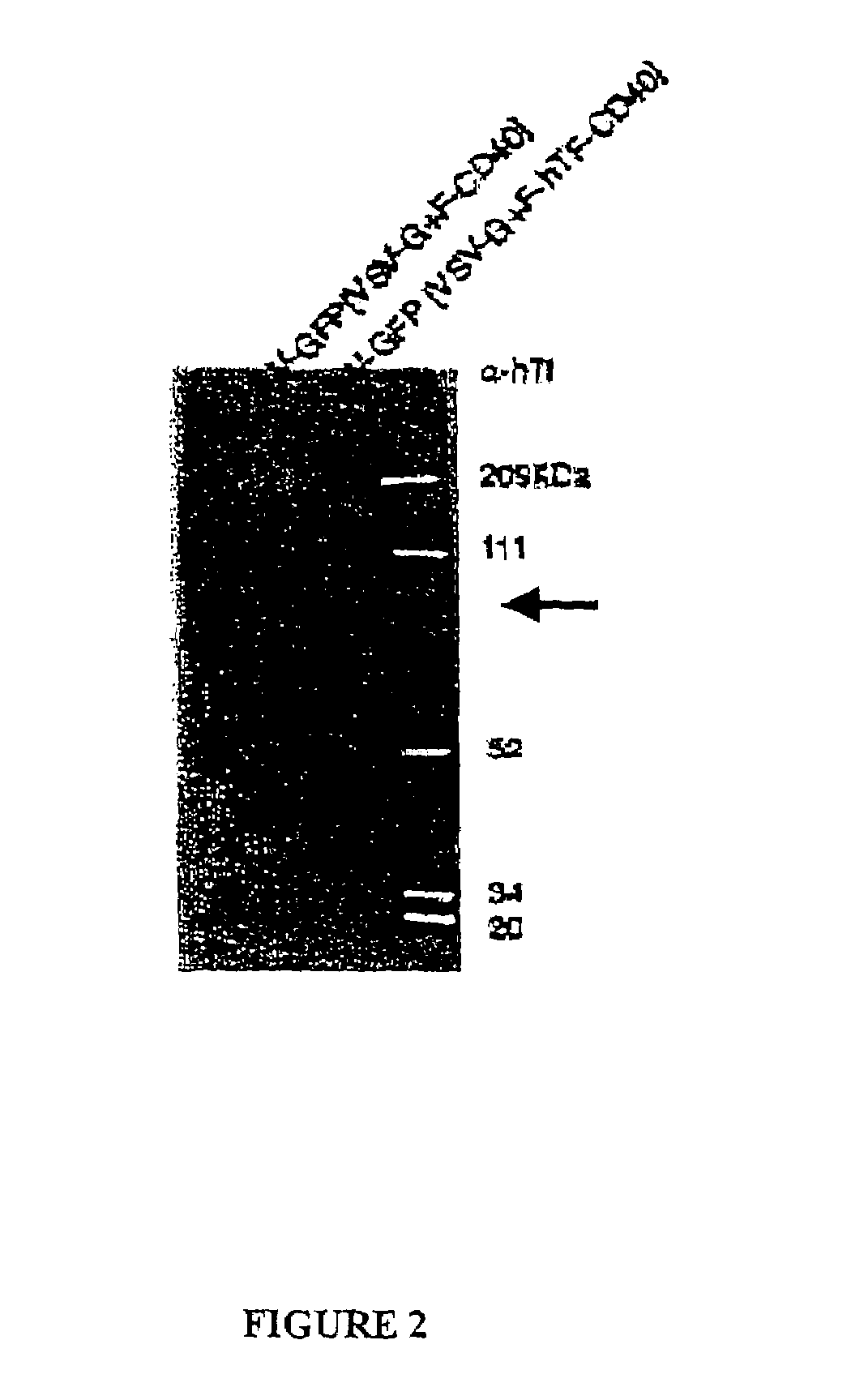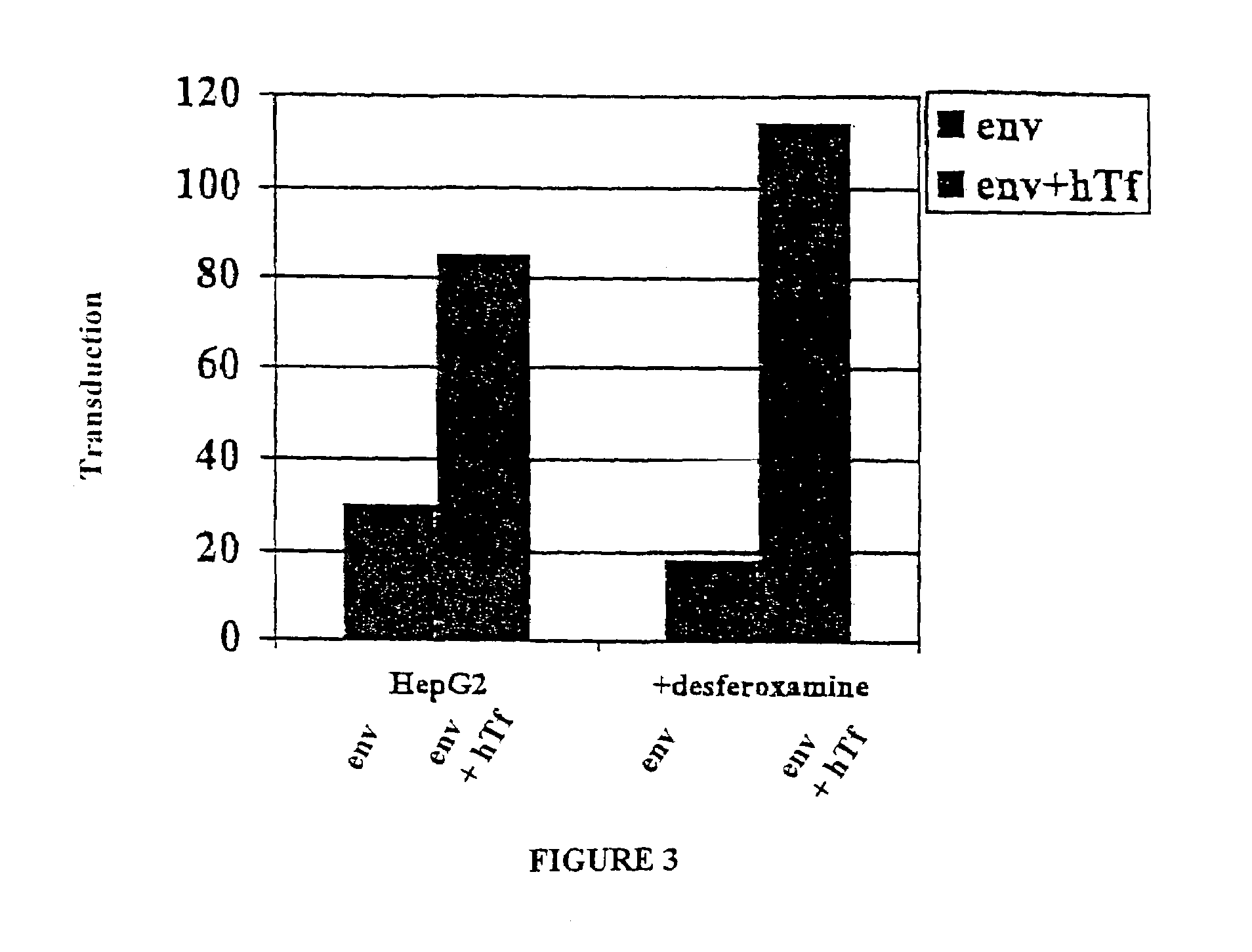Compositions and methods for tissue specific targeting of lentivirus vectors
a technology of lentivirus and vectors, applied in the field of gene transfer, can solve the problems of viral vectors not achieving a satisfactory combination of gene transfer efficacy, only achieving a transgene transient expression, and limiting the potential target of oncoretroviruses,
- Summary
- Abstract
- Description
- Claims
- Application Information
AI Technical Summary
Problems solved by technology
Method used
Image
Examples
example i
Construction of Modular Lentiviral Targeting Vectors
[0081]This example shows the generation of a lentiviral targeting vector that separates the attachment and fusion functions of the lentiviral envelope protein into different polypeptides.
[0082]Lentiviral vectors coexpressing an affinity ligand for cell specific targeting and attachment and a fusogenic polypeptide for vector transduction were produced using two different affinity ligands for targeting. Briefly, the targeting polypeptide was generated by fusing a transmembrane anchoring domain with either human transferrin (hTf) or apolipoprotein E4 (ApoE4) binding domains. The transmembrane domain and cytoplasmic tail of human CD40 polypeptide was used as the anchoring portion of the targeting polypeptide because it is efficiently incorporated into the HIV envelope upon maturation. Lentiviral vectors expressing either the hTf-CD40 or the ApoE4-CD40 chimeric targeting polypeptides were generated as described below.
[0083]To produce th...
example ii
Target Specific Transduction of Modular Lentiviral Targeting Vectors
[0100]This example describes the specific targeting and transduction of a cell with a vector genome harboring an expressible transgene.
[0101]The lentiviral targeting vectors described in Example I can be used for target specific transduction of a transgene of interest. The transgene can be contained in and expressed from the vector genome following packaging and delivery to target cells by the lentiviral vector.
[0102]A self-inactivating lentiviral transducing vector, or vector genome, can be used to deliver a desired gene to target cells. The self-inactivating vectors were generated from pHR′CMV-LacZ and pHR′CMV-Luciferase transfer vectors described by Naldini et al., supra, and Dull et al., J. Virology, 72:8463–71 (1998). pHR′ is a letiviral transducing vector containing cis-acting sequences of HIV required for packaging, reverse transcription and integration. Briefly, this vector contains HIV 5′ and 3′ long termin...
PUM
| Property | Measurement | Unit |
|---|---|---|
| pH | aaaaa | aaaaa |
| volume | aaaaa | aaaaa |
| volume | aaaaa | aaaaa |
Abstract
Description
Claims
Application Information
 Login to View More
Login to View More - R&D
- Intellectual Property
- Life Sciences
- Materials
- Tech Scout
- Unparalleled Data Quality
- Higher Quality Content
- 60% Fewer Hallucinations
Browse by: Latest US Patents, China's latest patents, Technical Efficacy Thesaurus, Application Domain, Technology Topic, Popular Technical Reports.
© 2025 PatSnap. All rights reserved.Legal|Privacy policy|Modern Slavery Act Transparency Statement|Sitemap|About US| Contact US: help@patsnap.com



